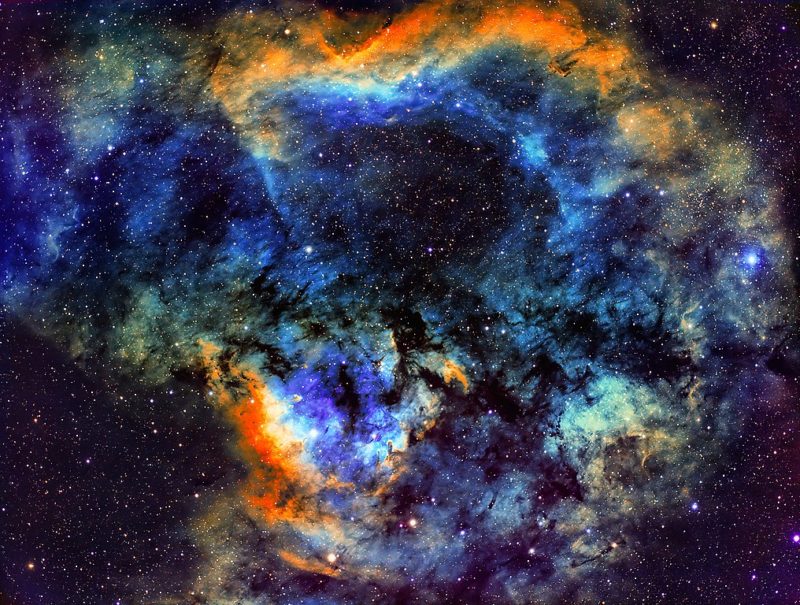
NGC 7822, a stunning and awe-inspiring celestial wonder in the shape of a cosmic question mark, is a haven for star formation. With its intricate and mesmerizing features, this astronomical masterpiece is a sight to behold for enthusiasts and experts alike.
In this article, we will delve into the astonishing features of this nebula, exploring its secrets and uncovering the treasures that lie within.
Where Is NGC 7822 Located?
This unique nebula, located in the constellation of Cepheus, has been a subject of intense scrutiny in recent years, as scientists seek to unravel its mysteries and understand its origin and structure. Despite its distance of about 2900 light-years from Earth, NGC 7822 has revealed spectacular beauty to those who have studied it, with its intricate patterns of gas clouds, dust clumps, and stellar winds.
The Structure of NGC 7822
NGC 7822 is actually made up of two major components. A beautiful emission nebula designated as Sharpless 171 and a young cluster of stars named Berkeley 59. The entire complex looks a cosmic question mark. See for yourself below.


An Abode for Star Formation
Astronomers have discovered that this unique nebula is a haven for star formation and a complex structure that consists of gas clouds, dust clumps, and stellar winds. The most striking feature of this nebula is its intricate network of filaments that extend across the entire region. These filaments are the result of shock waves that have been created by the powerful winds of young stars formed within the nebula.
One of the Hottest Stars in the Orion Arm
In addition, NGC 7822 is home to several massive stars, including one of the hottest stars discovered in the entire Orion Arm or our Milky Way galaxy, namely BD+66 1673. That star is of the O5V type and is part of a binary star system. It has a surface temperature of almost 45,000 K and a luminosity of as much as 100,000 times that of our Sun!
Conclusion
Astronomers have been able to reveal the spectacular beauty of NGC 7822, which has captivated the imagination of many. The region’s stunning visuals and scientific significance make it a must-visit destination for astrophotography enthusiasts. The nebula offers a wealth of opportunities for capturing breathtaking images of the cosmos. Overall, this nebula is a unique and fascinating destination for anyone interested in exploring the marvels of the universe.